Legends & Legacies
R.I.P. - Conservation Heroes
It is here that we celebrate the lives of those who we have been lost in recent times - each has, in their own way, contributed much to conservation in Africa. May we always remember them.
Whilst we honour these notable conservationists (below), it would be remiss not to recognise the unfailing sacrifice and duty given by the many rangers across this vast continent, who too have lost their lives in the name of conservation. A separate tribute page is planned to honour them.
'...this is for the stalwarts, the small band of brothers, past and present, who tried, who still try, to stop the wild life disappearing' - Keith Meadows - Rupert Fothergill, bridging a conservation era (1996)
-
While we mourn the passing of the great Dr Jane Goodall yesterday, we also give thanks to her immeasurable contribution to so many causes, most notably her pioneering research on chimpanzees and sustained campaigning for conservation, protection of the environment and a more harmonious relationship between people and the natural world.
Her lifetime commitment to causes she so passionately cared about was truly remarkable; her enduring energy fuelled by a resolve rooted in deeply held values and powered by courage. The legacy she leaves is profound, and her work will continue to be sustained by the many researchers, campaigners, advocates, rangers and others (across all sectors) whom she inspired. May their fortitude be renewed in her passing, for their work is vital.We give thanks and celebrate a life truly well lived.
Dr Jane Goodall’s legacy, devotion and passion for knowledge originated in the dense riverine forests of Gombe National Park in Tanzania. Yet what she discovered about the primates who live there has led to a truly global mission — one that, even as a nonagenarian, continues to this day. Richard Aldous
Source: Travel Africa magazine
-
It is with profound sadness that the Elliott family announces the passing of our beloved husband, father and grandfather, Alan Elliott - a titan of conservation and a father of Zimbabwe's safari industry. From founding Touch the Wild Safaris and the Presidential Elephants, Alan transformed how the world experiences Zimbabwe's wilderness. His legacy lives on through the thriving elephant herds he protected and the countless lives he inspired. We are deeply moved by the messages from around the world celebrating his extraordinary life. Your stories and tributes are a testament to the impact of his life's work.
Alan Elliot: 24 October 1938 - 1 August 2025
-
It is with great sadness that we must say farewell to Viv Wilson the Founder of Chipangali Wildlife Orphanage in Bulawayo.
Chipangali is a wildlife sanctuary for animals which stand little chance of survival in the wild. Animals, which have either been orphaned, abandoned, injured, born in captivity or brought up unsuccessfully as pets. It is often the last refuge for those brought in sick or injured, and increasingly it is a sanctuary for confiscated animals. Vivian Wilson and his late wife Paddy established the wildlife Orphanage in 1973. Chipangali is not a zoo; it offers a home to orphaned, abandoned and sick wild animals. When possible, rescued animals and birds are rehabilitated and returned to the wild. If safe release into their natural habitat is not possible, animals are cared for and kept for educational purposes and study. Endangered species may undergo captive breeding programs. Viv and Paddy were also very involved in establishing breeding groups of endangered African wildlife, research into wildlife and ecology, and education of the public, particularly children, in all fields of conservation. In addition, Viv carried out surveys on the distribution of Cheetah in Zimbabwe and on protection of the Chirinda forest. Mr. Wilson, a biologist, won the Rolex Enterprise Award in 1987 for his research on the duiker. He was a former chairman of Zimbabwe Parks and Wildlife Board. Viv wrote his wonderful book "Orphans of the wild" followed by an informative compendium on "Duikers of Africa" and in turn a book was written about Viv entitled "A Man For All Species". Chipangali has been featured in countless documentaries and is now world renowned for its pioneering work and is famed as one of Africa's largest and most successful wildlife rehabilitation/release centres. The Orphanage runs a Volunteer program, the Wildlife Experience Programme, which encourages young people from anywhere in the world to come and gain hands-on experience with caring for wild animals. The word Chipangali comes from the Chinyanja language in eastern Zambia where Viv Wilson originally began his career with the Zambia Government as a tsetse-fly control operator. It is here that the whole concept of Chipangali was born and derived. The word means 'open friendly country'. Chipangali founder Viv Wilson and his wife Paddy retired from the active side of running the Orphanage over ten years ago, in order to devote more time to urgent wildlife research projects. Viv has been the leading instigator of several unique projects, such a ten-year survey of the duikers of Africa, which culminated in the 800-page masterpiece named Duikers of Africa, Masters of the African Forest Floor. Recently Viv expanded his research activities to include a survey of the leopard and cheetah of Zimbabwe, the biodiversity of the Matobo National Park and the formation of the CRI (Carnivore Research Institute). Her Royal Highness, Diana, Princess of Wales was Chipangali's patron from 1983 until her sad death, when the Princess Diana Trust took over the role. In addition, the conservation activist and ex-actress, Stephanie Powers is a patron and Ambassador for Chipangali in the USA. Viv was one of Bulawayo's very special people, a true gentleman, always with a giant friendly smile, always one to remember a name and a face. Viv made an impact on almost every man, woman and child in Zimbabwe. His love for animals and his dedication to their welfare made him truly remarkable. Indeed we can safely call Vivian J. Wilson a legend, his absence will leave an immense gap in the Bulawayo Community.Source: Farewell Viv Wilson, Mags Kriel: Letters from Zimbabwe
-
Very sad news: our Raptors View Flora group member, Derek Solomon, has passed away from cancer. RV resident Derek was a massive inspiration for me and for many, many other nature lovers across Southern Africa. He is a true legend of the guiding world in Zimbabwe and Zambia and, later in his life, left an incredible legacy through his work with sound recordings, creating - among other things - safaris for blind people. He also authored a variety of awesome bird and nature books and apps! When I first met Derek more than 13 years ago, he was always documenting and photographing everything that lives on Raptors View and his enthusiasm brought about this FB group, as well as others. His contributions will always remain of big value and I'll certainly think of him lots as we document more trees and flowers.
Source: Flora of Raptors View on Facebook.
-
Phil was a remarkable man... an incredibly knowledgeable guide, outstanding naturalist and tireless conservationist who devoted his life to the wildlife and people of Zambia’s Luangwa Valley. Few have contributed more towards South Luangwa’s current status as one of Africa’s leading safari destinations. Phil spent most of his life in the Luangwa Valley, from his earliest days as a young game ranger to his later years in his beloved Kuyenda Bushcamp. As the valley’s elder statesman and undisputed wildlife expert, he held an exalted position in the safari community. His dedication and shining example inspired generations of young Zambians to follow in his footsteps. He leaves behind an outstanding legacy. The South Luangwa National Park and Kuyenda Bushcamp in particular, serve as fitting monuments to a unique man. His indomitable spirit will forever live on in the wilderness he called home.. The Bushcamp Company pays tribute and says farewell to our great friend, and much loved colleague, Phil Berry, who sadly passed away in the USA on the 30th July.
The Bushcamp Company pays tribute and says farewell to our great friend, and much loved colleague, Phil Berry, who sadly passed away in the USA on the 30th July.Source: The Bushcamp Company, Zambia: A tribute to a remarkable man: P.S.M.Berry (1941-2022)
-
Having your head in the mouth of a lion that is trying to kill you and getting your ear bitten off in the process is an experience that would put most people off a continuing a career in conserving the animals of Africa. But for Tony Fitzjohn, who has died of a brain tumour aged 76, it was a challenge. His close encounters with lions, leopards, rhinos and African wild dogs became his way of life. His mission was to help save these majestic species and create national parks for them so that humans and wild animals could happily coexist. His mentor, and the man who fought off the lion to save his life was George Adamson, warden of the Kora national reserve in Kenya. Adamson’s wife, Joy, in her 1960 book Born Free, about returning a cub to the wild (later made into a film), had already made his mission to save lions famous. The two men worked together at the Kora reserve for 18 years before Fitzjohn was offered a job in neighbouring Tanzania in 1989, to rehabilitate a national game reserve of 1,350 square miles. To give some idea how tough this was, the name of the reserve was Mkomazi, which means no water. Restoring Mkomazi became Fitzjohn’s mission for the rest of his life. By the time he landed this daunting job he was in his 40s and an experienced wildlife manager, fluent in Swahili, with a range of mechanical and engineering skills that enabled him to repair vehicles, build dams and organise anti-poaching patrols. But it was the force of his personality, his enthusiasm and sense of humour, and his ability as an ambassador for conservation that raised the awareness, and ultimately the funds, to make Mkomazi an outstanding success. By 2020, when the stewardship was passed back to the Tanzanian authorities, Fitzjohn had transformed the area that before he took charge had been heavily poached and degraded. What had almost become desert now has migrating herds of elephants, and the endangered African wild dog and the black rhino have a sanctuary. But in Tanzania he was famed not just for his work with wild animals and restoring their precious habitat. He knew that, to succeed, the park needed the approval of the local people too. Fitzjohn worked to provide them with clean water supplies, medical facilities and vocational training for youngsters. He concentrated on education, especially of the young, bringing them to the park, and is credited with building a secondary school for 320 children and upgrading classrooms for 13 junior and 22 secondary schools. He also travelled extensively internationally, raising funds, giving lectures and being an ambassador for wildlife. It was an extraordinary career for a man who had begun life in the suburbs of London. He was given up for adoption to the Church of England Children’s Society at the age of seven months by his unmarried mother. She had been deserted after an affair with a married man and could not any longer bear the stigma her situation brought her. He never met his biological mother or knew who his father was. He was fortunate in being adopted by Leslie and Hilda Fitzjohn when less than a year old. Leslie worked in a bank in Cockfosters, north London, and Hilda volunteered for much charitable work – a conventional lifestyle Tony found unsuited to his character. According to his own account he was a wild child. It was a book that changed his life. Having been confined to bed with typhus after drinking water from a puddle, Tony read and repeatedly reread the Edgar Rice Burroughs adventure story Tarzan of the Apes, and decided his future lay in Africa. Being sent to the independent Mill Hill school on a scholarship, his fees paid for by Middlesex county council, gave him the start he needed. There he became a scout and began to acquire skills he said were eventually useful in the African bush. After school he was unable to settle down to a job and took a steamer to South Africa. Again unable to find a role, he hitchhiked to Kenya where, although the bush country was nothing like the book he had read as a child, he finally thought that he had found his spiritual home. Indeed, in early photographs of him with lions, with his lean good looks and long hair, he looks remarkably like the Hollywood version of Tarzan. He also had a natural affinity with animals – and had found a mentor in Adamson, whom he credited with much of his success. Fitzjohn admitted he had always been wild himself, but his meeting Lucy Mellotte, when she was on an adventure holiday and he was embarking on his Tanzanian adventure, changed his life. According to friends their meeting and subsequent marriage in 1997 transformed and reformed him. He became a family man in the middle of the bush, working with his wife on the restoration of the national park. Despite the risks of living among wild animals and poisonous snakes, many miles from medical help, the couple had four children, Alexander and Jemima, and twins, Imogen and Tilly. His success drew royalty and many celebrities, conservationists and old friends to his camp in Mkomazi. In recognition of his work he was appointed OBE in 2006, and received the Prince Bernhard Order of the Golden Ark, the North of England Zoological Society’s gold medal and the Hanno Ellenbogen award. The George Adamson Wildlife Preservation Trust, which was formed in 1979, supports the conservation work in both Kora and Mkomazi national parks, drawing contributions from many foundations and individuals in Europe and America aiming to continue the work of Adamson and Fitzjohn. Fitzjohn is survived by Lucy and their children.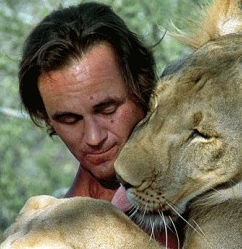 Tony Fitzjohn, wildlife conservationist who devoted his life to Tanzania’s Mkomazi National Park - born 7 July 1945; died 20 May 2022.
Tony Fitzjohn, wildlife conservationist who devoted his life to Tanzania’s Mkomazi National Park - born 7 July 1945; died 20 May 2022.Source: The Guardian
-
Margaret was also a close friend of Geoffrey Kent who founded Abercrombie and Kent. Geoff was looking for a place to house his guests for visits to the Ngorongoro Crater and so he funded the building of guest houses at Gibbs Farm in 1972, which rapidly grew into a thriving business both for A&K and Margaret Gibb. James Gibb died in 1977 and Margaret subsequently married Per Kullander but Margaret continued to run the farm until 2003. In Dec 1986 Margaret bought Ndutu Safari Lodge in the short grass plains of the Serengeti ecosystem with her long time friend Aadje Geertsema and developed the business into of Tanzania’s iconic owner operated, traditional safari lodges with immense loyalty from repeat clients. Margaret and Aadje sold the Lodge in 2018 but continued to live in Karatu and provide wonderful fresh, organic coffee and vegetables to Ndutu Safari Lodge until the day she passed in May 2022 at the age of 88. Margaret was an icon in the East African safari and hospitality industry. She was an astute businesswomen with a generous heart and considered all those that worked with her as family.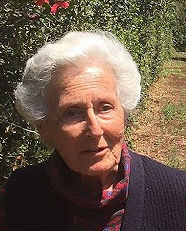 Margaret Gibb, affectionately known as Mama Gibbs, was born in Tanzania to British parents. In 1959 Margaret married James Gibb who had bought Gibb's Farm in Karatu in 1948. Margaret was an avid gardener who developed the famed flower and vegetable gardens that made Gibbs Farm famous.
Margaret Gibb, affectionately known as Mama Gibbs, was born in Tanzania to British parents. In 1959 Margaret married James Gibb who had bought Gibb's Farm in Karatu in 1948. Margaret was an avid gardener who developed the famed flower and vegetable gardens that made Gibbs Farm famous.Source: Rob Barbour, Ndutu Safari Lodge (www.ndutu.com/). : A tribute to a remarkable woman.
-
Nigel Pavitt MBE OGM, author, photographer, friend of the Samburu people and true Kenya legend Nigel Pavitt has passed away after a long, productive, inquisitive, adventurous, travel-filled life that lasted 85 years. It is a great loss for his many admirers, for us at Saruni, for Kenya, for the community of Kenyans and non-Kenyans who have read his timeless books and keep them close on the best shelf of their libraries because they are unique source of inspiration to learn more about the Africa we love and that he loved. For us at Saruni, who have been inspired by his profound passion for Africa, particularly for the semi-nomadic people of Northern Kenya and for disappearing rituals and tribal cultures, it is a very sad day and we want to celebrate him with our guests and supporters. Nigel was first of all an old-fashioned gentleman. He served in the King’s African Rifles and with the Kenya army, then settled in Kenya and travelled extensively collecting material for this photographic record, in the days when a good photographer had also to be a very good walker, almost an explorer, and then also a master of the art of printing once back home. At Saruni we have had the privilege to know him and to stock in our lodges his best-selling and long-selling book “Samburu” (it came out in 1991 and since then never stopped being sold in bookshops around the world). Nigel has been a pioneer of what then became known as travel writing. And one of the first to discover that the Samburu, the Turkana and the other tribes of Northern Kenya and of the Rift Valley possess a special wisdom and a culture that is unique and that deserves to be protected. His books were the kind of titles that keep to be reprinted year after year and never age, which include ”Ethiopia: The Living Churches of an Ancient Kingdom” capturing the beauty of Ethiopian ancient churches and monasteries. Only a few months ago, he has worked on a new edition of “Samburu”, with new photos. His other masterpiece, published in 2008, is titled “Kenya, A Country on the Making 1880-1940”: a stunning collection of 720 photographs, many of them drawn from family archives and scrapbooks and all carefully restored. The early photographers captured the beauty and dangerous allure of life on this spectacular frontier: the ceremonies and traditional attire of the native people, the fantastic machinery used in construction of the Uganda Railway, the gradual development of trade on the coast and in the country’s interior, the hardships of the East African Campaign during World War I, and the pioneering spirit of early European settlers and farmers. Nigel will be missed by many and at Saruni we are grateful to have known him. His books and his photos will keep his memory alive for a very long time.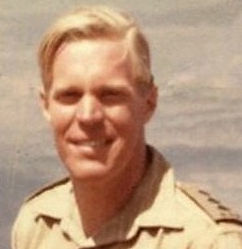 Nigel Pavitt had spent over four decades in East Africa, as army officer, business chief executive, entrepreneur, photographer and traveler. He has flown, driven, and hiked thousands of miles across its plains, through its forests, and up its mountains, camping in remote areas and experiencing its seasons in all conditions. Mr. Pavitt has published three previous books about Africa, two containing his photographs of tribal life and one on the early explorers of East Africa. He has been honored with an MBE (Member of the British Empire) awarded by Queen Elizabeth II in 1965 and an OGW (Order of the Grand Warrior) presented by the President of Kenya in 1993. A Fellow of the Royal Geographical Society, London.
Nigel Pavitt had spent over four decades in East Africa, as army officer, business chief executive, entrepreneur, photographer and traveler. He has flown, driven, and hiked thousands of miles across its plains, through its forests, and up its mountains, camping in remote areas and experiencing its seasons in all conditions. Mr. Pavitt has published three previous books about Africa, two containing his photographs of tribal life and one on the early explorers of East Africa. He has been honored with an MBE (Member of the British Empire) awarded by Queen Elizabeth II in 1965 and an OGW (Order of the Grand Warrior) presented by the President of Kenya in 1993. A Fellow of the Royal Geographical Society, London.Source: Saruni Camps & Lodges, Kenya: A tribute to an old-fashioned gentleman: Nigel Pavitt (1936-2022)
-
 Michael Rattray (11 August 1932 – 30 March 2022), tourism and conservation pioneer.
Michael Rattray (11 August 1932 – 30 March 2022), tourism and conservation pioneer.It is with great respect and sadness that we pay tribute to Michael Loring Peter Rattray, affectionately known as ‘MLPR’, who passed away peacefully in the early hours of Wednesday, 30 March 2022.
Mike founded MalaMala Game Reserve in the early 1960’s and owned and managed the internationally acclaimed game reserve for over 50 years, before retiring in 2016. Mike pioneered the concept of the photographic safari in South Africa and together with his wife Norma, they built MalaMala into one of the most recognised and respected eco-tourism brands in Africa. Mike was a farmer and breeder at heart, and his true passion lay in preserving and protecting the environmental integrity of his beloved MalaMala. The pristine beauty of the MalaMala property today is a fitting tribute to Mike’s life-long dedication to safeguarding his ‘special piece of Africa’. “Satisfying a nation does not mean destroying the pristine nature of the various eco-systems, but rather ensuring that their renewable attributes continue renewing themselves for the benefit of posterity and of economic wellbeing." Michael Rattray, July 1993 One of Mike’s most significant achievements was his negotiation with the South African National Parks which resulted in the removal in 1993 of the fence between the Kruger National Park and the private game reserves to the west. This is a key reason for the exceptional game viewing on MalaMala and Mike deserves enormous credit for this strategic initiative."It is significant that as we enter into a new era where the fences that have existed between us South Africans are currently being lifted, that the fence which separated wildlife from wildlife is also being lifted." Michael Rattray, Fence dropping ceremony – 7th July 1993
Mike had the foresight to recognise the importance of the land restitution process in South Africa, and he facilitated the transfer of ownership of MalaMala Game Reserve to the N’wandlamhari CPA in one of the largest land claims in South African history. Today, MalaMala operates in a successful partnership with the local community and serves as a blueprint for land restitution in the country. Beyond MalaMala and eco-tourism, Mike’s passions were horseracing and polo. Mike’s Lammerskraal Stud was consistently rated as one of the leading breeders in the country and Mike owned many Grade 1 race winners, including Yard Arm and Celtic Grove. Mike was also a Springbok polo player and spent many years as President of the South African Polo Association. In his final years he was Honorary Life President of SA Polo. In summary, Mike was an icon in the tourism sector, and he has left an indelible mark on our industry. Our thoughts are with his wife Norma, and his family and friends as we bid farewell to a legend!Source: Mala Mala Game Reserve
-
Barry Gordon Lovegrove was born in Harare, Zimbabwe, on 5 December 1956 and is the second eldest of six brothers. The family emigrated to South Africa when he was 6 years old, settling in Cape Town where he attended the South African College School (SACS) in Newlands for his primary and secondary school education. He studied zoology at the University of Cape Town (UCT) and obtained his PhD in 1987, specialising in animal energetics, under the supervision of Prof Gideon Louw. Following a short spell of teaching at UCT, Barry undertook a post-doctoral fellowhsip at the University of California, Los Angeles in 1988, followed by a post-doctoral fellowhsip as an Alexander von Humboldt Fellow in Marburg, Germany. Upon his return to South Africa, Barry joined the then Department of Botany and Zoology (University of Natal) as a Lecturer on the Pietermaritzburg campus in April 1992 and remained with the institution until his retirement in 2016. During this time, Barry rose to the rank of Full Professor, which was indicative of his prowess as both a highly skilled teacher and an internationally acclaimed researcher. Indeed, Barry boasted a significant international profile in the field of evolutionary animal physiology and was recognised as such in 2018 when he was awarded an A-rating from the National Research Foundation of South Africa. During his illustrious scientific career, Barry published more than 100 scientfic papers in high-end international journals and attained a highly commendable Hirsch Index of 41, reflecting the impact of his papers in his field. In his retirement, he maintained links with the University as Professor Emeritus. In addition, Barry published two books, namely the Living Deserts of Southern Africa (1994 and revised in 2021) and Fires of Life: Endothermy in Birds and Mammals (2019). Barry was a highly skilled, passionate and entertaining teacher, as will be attested by the many students whom he taught over the years. As a protagonist of research-based learning, Barry integated the content of his courses with examples from his own research and experience. Barry demanded high standards, both from himself and from his undegraduate and postgraduate students. While a few found this somewhat intimidating, those who worked closely with him benefitted immensely from this interaction, with the realization that they were working with one of the world’s best in the field. Indeed, Barry’s post-graduate students have excelled in their chosen careers and are testament to his inspired supervision and training.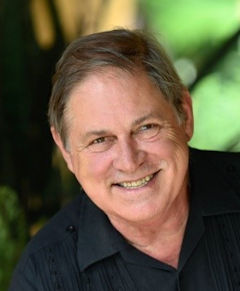 Barry Lovegrove - an academic and world-class researcher, Professor Emeritus at UKZN and A-rated NRF scientist and author.
Barry Lovegrove - an academic and world-class researcher, Professor Emeritus at UKZN and A-rated NRF scientist and author.We acknowledge Barry for his substantial contributions, not only to our institution, but also to the global scientifc community, and for enriching our lives with his passion, character and presence. Barry lived life to the full and we are immensely grateful for the time that we were able to share with him.
Source: School of Life Sciences, UKZN
-
Veronica Roodt passed away in her camp in Moremi Game Reserve on 21 February 2022. She was found sitting in her arm chair, on her deck overlooking the Okavango Delta, the place that she loved so dearly, and spent most of her life researching and mapping. She was a pioneer in the development of the Botswana tourism industry. Many years of research, experience and integration with local tribes and communities, resulted in the publication of a wide variety of literature, maps and guide books on all the national parks of Botswana, Tanzania and the Kruger National Park in SA. Her scientific publications were written so that anyone could enjoy learning about the Wild Flowers of the Okavango Delta, Trees and Shrubs of the Okavango Delta, and most recently after many years of research, Grasses and Grazers of the Okavango Delta. Her extensive knowledge of fauna and flora is unmatched and her commitment to teach as many people as possible about the wonders of nature will always be her legacy. She was born on 10 February 1957 in Pretoria, South Africa. She completed her BSc Degree at the University of Pretoria. Veronica is survived by 3 brothers and 1 sister. Her research career first started in Botswana in 1988, when she embarked on her MSc Studies. Her first camp being situated near North Gate public campsite and Kwai Village, in the Moremi Reserve. Veronica continued to live in a tented camp in the Moremi Game Reserve for 34 years, until her untimely death, at the age of 65. Her dedicated love for Botswana and her people, her appreciation of the pristine surroundings in which she could conduct her life’s work, far outweighed the luxuries of urban life. Close family and friends will know that she was a very talented piano player and would spend many hours, even in her camp in the Botswana wilderness, playing and mastering very complicated pieces of sheet music. She is also well known for her artwork which has been widely sold on exhibitions in Botswana and South Africa. Many of her publications include her own drawings and paintings of plants, trees etc. Veronica, or Ronnie as she was known by family, will always be remembered for her ability to inspire, to invest in your life and wellbeing and believing in you, unconditionally. She was a legend, to family, friends and colleagues, around the Globe. May her sweet, gentle soul rest in peace."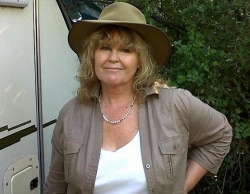 Veronica Roodt - author, scientist, naturalist and artist.
Veronica Roodt - author, scientist, naturalist and artist.Source: Botswana Safari News
-
His groundbreaking work contributed to the recognition of Africa as the birthplace of humankind. He also spearheaded campaigns to stop poaching in Kenya, famously burning the country's stockpile of poached ivory. Kenyan President Uhuru Kenyatta said Leakey had "served our country with distinction". Leakey served in various positions in the Kenyan government including the National Museums of Kenya, the Kenya Wildlife Service and as head of the civil service. "Besides his distinguished career in public service, Dr Leakey is celebrated for his prominent role in Kenya's civil society where he founded and successfully ran a number of institutions," Mr Kenyatta said. Leakey followed in his parents' footsteps in paleoanthropology - the practice of seeking to understand human evolution by studying fossils and ancient tools. In his 20s, Leakey made his own important finds, and in two ground-breaking books (Origins and People of the Lake), he explained the emergence of Homo erectus, an ancestor of modern humans. His work contributed to the growing body of evidence that the earliest humans had lived on the African continent. In 1981, he fronted a seven-part BBC television series called "The Making of Mankind", which made him a household name. In the late 1980s, he switched careers to take over as head of Kenya's Wildlife Service at a time when poachers were wiping out the country's entire elephant and rhino populations. He told his rangers to shoot poachers on sight and organised the spectacular public burning of a huge haul of ivory. In 1993, the small plane he was flying in lost power and crashed. He survived but both of his legs were amputated below the knee. That did not stop him from entering Kenyan politics, setting up a new political party. But his political career did not last and in 1998 he took up a role as head of Kenya's civil service, with a mission to fight official corruption. He lasted three years in the role before returning to the Kenya Wildlife Service. At the time of his death, he was serving as chairman of the Turkana Basin Institute at Stony Brook University in the US. The institute works to facilitate research and education in palaeontology and archaeology in northern Kenya. Kenya's Deputy president said Leakey "inspired many Kenyans with his loyalty to his country. He loved Kenya". Richard Leakey, a world-renowned Kenyan conservationist and fossil hunter has died aged 77.
Richard Leakey, a world-renowned Kenyan conservationist and fossil hunter has died aged 77.Source: BBC News
"I was very sad to hear of Richard Leakey’s death. He was an inspirational & courageous conservationist and I was privileged to meet him. He transformed the Kenyan Wildlife Service & valiantly spearheaded efforts to stop elephant poaching. Conservation has lost a true visionary." Prince William, The Duke of Cambridge.
Warch a short video celebrating the passing of 3 naturalist legends (including Richard Leakey): In The Footsteps of Giants -
The deaths of Mr Young and two Spanish citizens were confirmed on Tuesday. Mr Young, who was born in Zambia, was the President of Chengeta Wildlife, an organization established to support anti-poaching efforts on the ground in Africa. He "dedicated his life to wildlife protection," the website stated. It is understood Spanish journalist David Beriain, 44, and cameraman Roberto Fraile, 47, were working with Mr Young on a documentary about poachers when they came under attack. A voice recording which purports to be from a jihadist organisation known as JNIM, which has links to al-Qaida, has claimed responsibility for the attack, The Associated Press has reported. In a statement issued this morning, Minister for Foreign Affairs, Simon Coveney, expressed his "sincere condolences to Rory Young’s family, and to the families of the two Spanish nationals who also lost their lives in this tragic incident." He condemned 'in the strongest possible terms' the actions of those who are responsible for this attack. "We will continue to liaise with the authorities and partners on the ground on the matter," the Minister added. A statement from the Burkina Faso Government stated that the bodies of the dead have not yet been recovered, but videos confirm the deaths. The Chengeta Wildlife website described Rory Young as a pro guide, ranger, anti-poaching strategist/trainer and author. According to his bio, he was "an expert tracker with amazing knowledge, skills and highly developed intuition to become one of the best in his field." Mr Young dedicated his life to wildlife protection and he co-authored, A Field Manual For Anti-Poaching Activities, a guide that provides "workable solutions to poaching.” "It is with deepest sorrow and regret that Chengeta Wildlife confirms the death of Rory Young, our co-founder and CEO," said Chengeta Wildlife in a statement. "Rory was leading a wildlife protection patrol in Arly National Park, Burkina Faso on 26th April 2021 when they were attacked by terrorists which resulted in his death and that of two Spanish journalists who were capturing his efforts to protect precious wildlife. "Our thoughts and prayers are with the families of the deceased right now. We respectfully request your patience, time and understanding as we deal with the loss of our inspirational leader." In his own Twitter bio, Mr Young described himself as "Doing what I can before it is too late." "Do what you can too."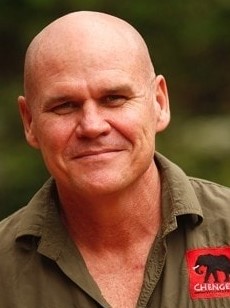 Conservationist Rory Young was among a group of foreigners abducted when a special wildlife unit was ambushed in Burkina Faso on Monday morning.
Conservationist Rory Young was among a group of foreigners abducted when a special wildlife unit was ambushed in Burkina Faso on Monday morning.Source: The Irish Examiner 28 April 2021.
IN LOVING MEMORY OF RORY YOUNG from Chengeta Wildlife...we will do you proud.
OUR TRIBUTE TO RORY YOUNG ON HIS BIRTHDAY - 22 May 2021 (video)
-
The Mara Elephant Project has announced the passing of well-known conservationist, Colin Church. The following is a tribute to Church by Marc Goss, CEO of Mara Elephant Project. “Up until his death, Colin was the chairman of MEP and a founding member of the organisation. He was a pillar, mentor and gentleman who did so much for so many. Colin’s passion for wildlife conservation came to the fore in the Aberdare National Park when he led the Rhino Ark with the enormous task of fencing and protecting the Water Tower and the endangered species living there. Colin brought new skills to the conservation space from his business career in public relations. Colin’s contributions to conservation, the environment and the community in Kenya, was recognised when Her Majesty the Queen honoured him with the Most Excellent Order of the British Empire in 2017. When the Kenya Wildlife Service (KWS) – responsible for all wildlife and national parks in Kenya – asked Colin to be its chairman, he accepted and implemented new and innovative programmes by developing inter-agency partnerships and developing communication and marketing strategies, bringing wildlife conservation into the national limelight. Colin’s other accomplishments include chairmanship of the prestigious Muthaiga Country Club, founder of Eburru Rafiki, founder of Church Orr PR Consultancy, published author, and key adviser to Big Life Foundation and the Bongo Surveillance Project. Colin’s leadership at MEP championed the next generation of conservationists, the rangers who work on the front line. Colin guided our board, mentored management staff, and pride glowed on the faces of MEP rangers when he would visit and congratulate them for their work. To work with, be mentored by, and learn from Colin’s gentle, decent, and steadfast resolve, has been an honour. Alongside being a national treasure, Colin was the loving leader of the ‘Kanisa Clan’. From every ranger and staff member at MEP we send our condolences to Nicole, Marcus, Tanya, Julie, Antonia, and his many grandchildren and relatives.” Colin's son, Marcus Church, added: "One of his greatest achievements was the work he did for conservation and the community in Kenya through the Rhino Ark where he was chairman of the committee for 12 years. His main focus at this time was completing the fencing work of the Aberdare Forest. His famous quote was: 'Humans and wildlife living in harmony'. He was a wonderful father, friend and inspiration in our family and to all those that knew him well."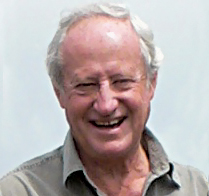 Colin Church OBE (28 January 1940 – 16 March 2021)
Colin Church OBE (28 January 1940 – 16 March 2021)Source: Mara Elephant Project.
-
This remarkable woman, who has dedicated her life to saving the cheetah, had still been at the helm of the cheetah centre until four years ago, after which she handed over the reins to her nephew, Eric van Dyk. Her passion and dedication to these animals were unrivalled and she was a force to be reckoned with in the conservation world. ‘Ann founded the centre in 1971 on her family farm in De Wildt after she and her brother, Godfrey, rescued two cheetah cubs in the late 1960s from a farm in the then Northern Transvaal. However, without the necessary permits, they had to send to cubs to the National Zoological Gardens of South Africa in Pretoria. At the time, the Zoo was establishing a captive breeding programme, but further expansion was limited due to the lack of land available and Ann offered the use of their farm for the programme. The cheetah centre was born. The Ann van Dyk Cheetah Centre has received international recognition for bringing the cheetah back from the edge of extinction and it was largely due to their efforts that the cheetah was removed from the endangered species list in 1986. Over the years various other endangered species have been bred at the Centre and these include African wild cat, Suni, Blue and Red Duiker, Riverine Rabbit and vultures, including the very rare Egyptian Vulture. The small antelope and Riverine rabbit projects were handed over to other institutions such as the Karoo and the Kruger National Parks, once successfully underway. Ann received a gold medal award from the South African Nature Foundation for her contribution in 1988. More than 80 research publications have been written and undertaken through the facility and this research contributes to the well-being and survival of the species. Her outreach education programme has reached over 100 000 learners. Ann also introduced the Wild Cheetah Management Programme that successfully captured wild cheetahs that were considered “problem animals’ and relocated them into protected areas. The Ann van Dyk Cheetah Centre celebrates its 50th birthday this year and it will continue to be a testimony to her extraordinary conservation work. “She was a remarkable woman who lived her life doing what she loved. She inspired us all and everyone she came in contact with. We will miss her dearly, but the centre will always be the symbol of her love and dedication to our wonderful animals,” said Petro van Eeden, manager of the centre. Ann Van Dyk, the legendary founder of the Ann van Dyk Cheetah Centre (also known as the De Wildt Cheetah and Wildlife Centre), internationally regarded as having saved the cheetah from extinction in South Africa, passed away at the age of 90.
Ann Van Dyk, the legendary founder of the Ann van Dyk Cheetah Centre (also known as the De Wildt Cheetah and Wildlife Centre), internationally regarded as having saved the cheetah from extinction in South Africa, passed away at the age of 90.Source: Kormorant.co.za
"Ann van Dyk was a remarkable woman. She lived her life for cheetahs, and she was an inspiration to us all. I miss her already." Dr. Laurie Marker, Cheetah Conservation Fund.
-
Those closest to him at the College shared a heartfelt message for their Tata Mkulu (as he was so fondly called by the students and staff): It is with great sorrow that we announce the passing of André Kilian, beloved former CEO of the SA College for Tourism. As we all are reeling from the shock of his untimely passing, it is hard to find suitable words to pay tribute to this truly remarkable man.
It is with great sorrow that we announce the passing of André Kilian, beloved former CEO of the SA College for Tourism. As we all are reeling from the shock of his untimely passing, it is hard to find suitable words to pay tribute to this truly remarkable man."You were there from the beginning. A fierce and protective leader, who was a father figure to so many. There is no hallway, lecture room, office, or heart you did not imprint on. The legacy you leave and the impact you have had on 1000’s of young men and women who have entered (and are still to enter) the gates of SACT is immeasurable. It is our deepest privilege to have known you and our profound task to uphold your memory. We find comfort in the belief that you will be guiding us at every step."
André was the CEO of the Tourism College from when it was established in 2001 up until his retirement at the end of 2019.
André leaves behind a lasting legacy having profoundly changed the lives of so many young women and men. - Werner Myburgh, CEO of Peace Parks Foundation.
On behalf of all the staff and students at SACT, and the colleagues at Peace Parks Foundation, we send our deepest condolences to Nicole, Michelle, Fraser, Nkosi, Chris-Henry and Owen during this sad time. To a man who accomplished a remarkable task and leaves the world a better place than he found it. You will be deeply missed. Mazel Tov Tata Mkulu!
The SA College for Tourism is a non-profit organisation that operates under the auspices of Peace Parks Foundation.
Source: Peace Parks Foundation.
-
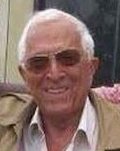 Gérard Pasanisi, renowned conservationist and tourism developer, dies at 94.
Gérard Pasanisi, renowned conservationist and tourism developer, dies at 94.Gérard Pasanisi, a renowned French national who devoted his entire life to foster tourism development and wildlife conservation in the country as well as diplomatic ties between Tanzania and France, has died at 94.
Mr Pasanisi, who came into Tanzania 1967 with love of tourism and wildlife conservation, passed away peacefully on August 13, 2020, after a short illness. He would be buried on August 18 at Nice, a seaport city in Southeastern France. The man, who spent 40 years in Tanzania, is credited to have poured his energy into nurturing the current multi-billion-tourism industry, and spearheading wildlife conservation, particularly in the Southern circuit, soon after independence. Mr Pasanisi was the founder of the Mount Kilimanjaro Safari Club (MKSC), one of the country’s successful tour companies at the moment with its base in northern safari capital, Arusha. “We have lost a man who poured his soul in developing tourism and wildlife conservation in Tanzania. We will remember him as a person whose initiatives in the tourism industry had created job opportunities for the poor communities” said the MKSC Director, Mr George Ole Meing’arrai.“His legacy goes beyond tourism and conservation. He also touched lives of many through the corporate social responsibility, the spirit that drives our company” Mr Meing’arrai said.
Hopefully, the history will also do justice to Mr Pasanisi as a man who significantly shaped the diplomatic relationship between Tanzania and France. In 1974, the then Natural Resources and Tourism Minister, Skeikh Hasnu Makame designated Mr Pasanisi as a representative of Tanzania Tourist Corporation in France, Italy and Benelux, the position he held for 20 years consecutively. Records indicate that during his 20-years stint, he organised and financed numerous study tours and visits of various Ministers of tourism, including the third-phase regime’s Prime Minister, Fredrick Sumaye, in France. In 1976, Mr Pasanisi appointed by the then Foreign Affairs Minister, Benjamin Mkapa to spearhead a mission in restoring the diplomatic tie between France and Tanzania, the assignment he did successfully. In 1978, just two years after having reinstated the diplomatic relationship, Mr Pasanisi had successfully managed to mobilize funds for Tanzania to build the new airport in Dar es Salaam. For many, there is no doubt that his various endeavors, particularly the support he obtained from the French Ministry of Defense in favor of the anti-poaching drive, deepened the links between Tanzania and France. In 1985, when numerous roads were opened in the Selous Game Reserve (50.000 Km2) due to the Geo-source lorries prospecting for petroleum, intensive elephants poaching increased dramatically. In 1988, on the request of the Wildlife division Mr. Pasanisi, interceded with Mr. Brice Lalonde, French Minister of Environment, as France presided the European Union. As a result, during the CITES Conference in Lausanne, Switzerland, ivory trade was banned and he ensured the Ministry of Natural Resources and Tourism also outlawed bush meat in every lodges and restaurants in Tanzania. In 1993, Mr Pasanisi was designated Honorary Consul of Tanzania in France. He was also Chairman of Tanzania Hunting Operators Association (TAHOA). Way back in 2007, Tanzania saw an upsurge of elephants poaching, reaching a deadly proportion in 2012, 2013 and 2014, respectively, prompting Mr, Pasanisi to form the Wildlife Conservation Foundation of Tanzania (WCFT). Through the WCFT he founded with late President Benjamin Mkapa in partnership with former France President Valéry Giscard d’Estaing, more than 25 four wheel drive vehicles, fully equipped, were donated to the Wildlife division, last year alone. “Mr Pasanisi devoted his life to fight so many battles for this Country, where his soul will never leave” noted Mr Meing’arrai.Source: eturbonews.com
-
Our thoughts are with his family, his wife Vanessa, his daughters Natasha, Acacia and Tamara and his brother and sister Stephen and Naomi. Ben first came out to Africa on a university holiday. He always joked that he only stayed because it was raining on the day he was meant to hitchhike to the airport, but really his soul was simply too aligned with the spirit of Africa to allow him to leave. Ben loved Zambia with such a passion that Zambia could do nothing but love him back. As locals often recall, Ben arrived in Livingstone in a Microlight with floats. He and Will Ruck Keene started Tongabezi with only four tents and a few bucket showers, but since then and despite the tragic loss of Will to a car accident, Ben turned their dream into one of Conde Nast’s top 20 hotels in the world. Ben changed the face of Zambian tourism through his passion for sustainability and uplifting communities. In this, he was helped by the love of his life, Vanessa, who has run the Tongabezi Trust School on a volunteer basis for the last 23 years. Ben also opened Sindabezi Island and created the Livingstone Island and Devil’s Pool Tour experiences on the edge of Victoria Falls, this changing the face of one of the Seven Natural Wonders of the World forever. We will all mourn the loss of Ben but we will keep his legacy at Tongabezi going. We are deeply saddened to announce that the Chairman and Co-Founder of Tongabezi, Ben Parker, has moved on to greater adventures after a courageous fight against cancer.
We are deeply saddened to announce that the Chairman and Co-Founder of Tongabezi, Ben Parker, has moved on to greater adventures after a courageous fight against cancer.Source: Zambia Tourism Agency.
-
 Paul G Allen, the genius inventor and polymath co-founder of Microsoft who died last week, was a relatively unsung hero of African wildlife conservation. Safarious deputy editor, Tony Weaver, pays tribute in his Man Friday column:
Paul G Allen, the genius inventor and polymath co-founder of Microsoft who died last week, was a relatively unsung hero of African wildlife conservation. Safarious deputy editor, Tony Weaver, pays tribute in his Man Friday column:Our family has a collection of kangas collected on our travels around Africa. The ones from East Africa are particularly special as each carries an illustrated KiSwahili proverb, a tradition dating back to the early 1900s.
One of the more popular proverbs (and one that, like so many KiSwahili proverbs, has its echo in many languages, including Afrikaans) is Mti mkuu umeanguka, ndege wa mashakani. It means “a big tree has fallen, the birds are in trouble.” It’s a proverb that applies to Paul Allen, the co-founder of Microsoft, who died on October 15 at the age of 65 from cancer complications. He was a big tree, but a tree with many, many branches. I have scoured some of the more prominent obituaries in the last week, and they all struggle to list everything that Allen did. That’s the trouble with polymaths – they are impossible to nail down. Paul Allen was, of course the co-founder with his childhood friend, Bill Gates, of Microsoft, the company that changed the course of modern history. Allen left Microsoft in 1983 after a clash with Gates. But his Microsoft shares made him one of the richest men in the world. But he was also a philanthropist who funded brain science research, a space geek, owner of two sports teams, and a world class rock musician. Jazz legend Quincy Jones compared his guitar playing and voice to Jimi Hendrix, one of the greatest rock musicians of all time. Strangely, few of the obituaries have paid tribute to his deep love and passion for conservation and the African bush. He spent millions and millions of dollars on preserving wildlife, especially on elephant and ocean conservation. His mission statement on this is “habitat loss, climate change and human greed are driving species loss at an unsustainable rate. Through data, technology and science, conservation efforts can be informed and developed to protect threatened species and restore balance to ecosystems.” He funded the mammoth (no pun intended) Great Elephant Census. Coordinated by Botswanan elephant specialist, Dr Mike Chase, the comprehensive elephant count revealed a devastating 30 percent decline in Africa's savanna elephant population, mainly because of poaching. And Allen funded the development of the breakthrough high tech anti-poaching Domain Awareness System. This is “a tool that aggregates the positions of radios, vehicles, aircraft, animal sensors and other new technologies to provide protected area managers with a real-time dashboard that depicts the status of the wildlife being protected, and the people and resources protecting them.” The system is being rolled out in key wildlife areas across Africa, including the Maasai Mara and the Kruger National Park, and is already proving to be highly effective in monitoring and combating poaching without having to commit massive human resources to ground patrols. It is impossible in a brief column to even touch on everything that Allen did – he funded DNA testing of poached ivory, climate change research, programmes to combat Ebola and the Zika virus, arts and culture, Shakespeare festivals, shark and ray research, homelessness, and even hip-hop music. A big tree has fallen, but its many branches will root and spread the legacy of Paul Allen, one of the great polymaths and philanthropists of our time. He was a true friend of Africa. -
 Wilderness Safaris is devastated at the loss of one of its co-founders and true safari stalwart, legend and Wilderness champion, Russel Friedman (24 December 1950 to 4 February 2018). He tragically passed away from a heart attack on Sunday morning, 4 February 2018 – at least doing something he really loved: mountain biking with good friends.
Wilderness Safaris is devastated at the loss of one of its co-founders and true safari stalwart, legend and Wilderness champion, Russel Friedman (24 December 1950 to 4 February 2018). He tragically passed away from a heart attack on Sunday morning, 4 February 2018 – at least doing something he really loved: mountain biking with good friends.The longest-serving and one of three original Wilderness Safaris co-founders, Russel joined Wilderness in 1984, playing a pivotal part in its growth and development.
He will be enormously missed, not only by his family (wife Bonnie and daughter Gabi) but by many in the vulture conservation community, the book dealer and publishing world, the cycling fraternity and of course, several generations of Wilderness Safaris employees who he mentored and guided – always with the best and most generous intentions.
In the 1970s, Russel had been instrumental in founding the Vulture Study Group and pioneering a change in attitudes to these birds (hence his nickname ‘Vulcha’), and by the early 1980s was running the country’s most influential natural history book dealer and publisher. It was through the book business that he met Colin Bell and Chris MacIntyre, the other two founding partners of Wilderness Safaris. He supplied them, and a host of other naturalists, with books and material for their overland safaris into Botswana and Zimbabwe from Johannesburg. It wasn’t long though before he joined the fledgling business, quickly making a substantial impact not only with his conservation ethos, but also his considerable business acumen. Russel’s enormous contribution to the development of Wilderness Safaris is one that is not widely enough known.
To this day, after some 34 years of passionate commitment, Russel was still an integral part of the Wilderness Safaris family and business. As the founder and chair of the Wilderness Trust, and later on Children in the Wilderness as well, he was often the company’s conscience in the areas of ethics, community and conservation. Fondly known as “Papa Smurf”, Russel was also a brilliant photographer and the driver of the Tour de Wilderness mountain bike events, raising funds for Children in the Wilderness and the Trust and making an incredible contribution to the empowerment of Africa’s people and the protection of its wilderness areas.
“It is with deep sadness and regret that we share this news with you, but also with deep gratitude that we remember Russel and the role he played in our lives and the life of the company. His love of life, passion for conservation and his immense integrity will be missed by all who knew him”, said Keith Vincent, Wilderness Safaris CEO.
-
 Kenya has lost one of its greatest ambassadors for wildlife conservation, Mr Willie Roberts. The Mara Elephant Project would not exist if it were not for the visionary efforts taken by Willie, the forefather of wildlife conservation in the Maasai Mara.
Kenya has lost one of its greatest ambassadors for wildlife conservation, Mr Willie Roberts. The Mara Elephant Project would not exist if it were not for the visionary efforts taken by Willie, the forefather of wildlife conservation in the Maasai Mara.Willie was born and raised in Kenya where his parents David and Betty lived most of their lives on the shores of Lake Baringo. David pioneered safaris in Northern Kenya and was regularly asked to organize and lead safaris for dignitaries like Prince Philip.
In the 1980s, Willie and Sue moved to the Maasai Mara with the intentions of setting up a farm, but they soon realized the land was better suited for wildlife. He was the first in the Maasai Mara to convert his land into a conservancy that the neighboring Maasai landowners could collect wildlife-based income from; he called it Ol Chorro Oiroua Group Ranch. His involvement in conservation and tourism was ahead of its time; he realized that fostering a relationship among wildlife conservancies, local communities and the tourist industry in the Maasai Mara was what was necessary to sustain the precious ecosystem.
“Mr. Willie Roberts came to the Mara in 1980 and farmed sunflower, wheat, and maize, but after seeing a gap in the protection of wildlife he soon became a full-time conservationist and naturalist. It wasn’t long before Willie was designated a KWS Warden for the areas surrounding the Maasai Mara. In 1991, he singlehandedly brokered a deal with the Paramount Chief Ole Ntutu and Former Kenyan President Arap Moi to make the first conservancy named Ol Choro Oiroua Group Ranch. That same year the High Court of Kenya decreed that all of the group ranches surrounding the Maasai Mara National Reserve could collect tourism revenue independently of the Narok County Government; this was the birth of conservancies in Kenya.” Marc Goss, CEO Mara Elephant Project.
Willie didn’t stop there, he went on to establish the Mara North Conservancy in an area that was known for its rampant poaching and hunting. He established the first anti-poaching patrols that became the blueprint for conservation models, like MEP’s, all over the world.
“Willie worked hard to make Ol Choro a world-class conservancy putting in infrastructure for rangers and implementing wildlife management techniques. He then founded the famous Mara Conservancy in the Maasai Mara National Reserve.” Marc Goss, CEO Mara Elephant Project.
After the Mara, Willie and Sue Roberts headed to Northern Kenya and founded Sirikoi, known as one of Africa’s top luxury safari destinations neighboring Lewa Wildlife Conservancy. From its conception, Sirikoi has nurtured a strong commitment and passion for conservation through the protection of endangered species, the support of community conservation and development programs that educate the local community on the value of wildlife. This model has become Kenya’s leading one for wildlife conservation and low-impact community tourism.
“Without Willie MEP would not have our project. We’ve applied his vision to the MEP mission.” Marc Goss, CEO Mara Elephant Project.
Courtesy: Mara Elephant Project
-
Adventurous by nature, Root, his third wife Fran Michelson and their two sons went “on safari” to Alaska in April despite the diagnosis. He passed on peacefully at his home on the edge of the Lewa Wildlife Conservancy. Root made almost two dozen wildlife films acclaimed to have brought the magic of Africa to millions of television audiences around the world. The majority of the films were shot in collaboration with his first wife Joan from the 1960s to the 1980s. And many won them awards, including an Oscar, two Emmys, a Peabody, and one from the Jackson Hole Wildlife Film Festival. His work also earned him an Order of the British Empire (OBE), bestowed on him by Queen Elizabeth. Among his most acclaimed films are Baobab: Portrait of a Tree (1973), The Year of the Wildebeest (1974), Balloon Safari (1975) and Mysterious Castles of Clay (1978) which was narrated by Orson Welles and scripted by Root himself. Alan Root, the renowned wildlife filmmaker who died on August 26, at his home in Nanyuki, 100km north of Nairobi, was a Briton by birth but spent more than 70 of his 80 years living and working in Africa.
Alan Root, the renowned wildlife filmmaker who died on August 26, at his home in Nanyuki, 100km north of Nairobi, was a Briton by birth but spent more than 70 of his 80 years living and working in Africa.Unique film style
His forte was filming wildlife in their natural habitat. In fact, he is credited with pioneering a unique film style that made animals the stars and their ecosystems the sets.
Through his films, many scientists and tourists were to the habits of everything from termites, leopards and hippos to wildebeests, crocodiles and baby flamingos. Root is even credited with introducing the American zoologist Dian Fossey to the renowned silverback gorillas of Rwanda, which she subsequently studied in the wild for over 18 years. Fossey died mysteriously and her killers were never found. But her life in the wild was made into the movie Gorillas in the Mist which Root helped to shoot. Root’s introduction to mountain gorillas almost ended his filmmaking career when one chest-beating silverback lunged at him and took a chunk of his calf. According to his 2012 autobiography titled Ivory, Apes and Peacocks: Animals, Adventure and Discovery in the Wild Places of Africa, the primate burst out of the forest cover towards him “like a Doberman on steroids.” Root survived, but the gorilla incident is just one of the many run-ins he had in his illustrious career.Run-ins
There was the leopard that pounced and bit him on his backside while filming in the Serengeti; the angry hippo that bit off a “Coke bottle” sized chunk of his thigh while he was filming underwater in Mzima Springs in Tsavo West National Park, and there was even a puff adder whose bite gave him an anaphylactic shock that nearly killed him.
He survived but lost his right index finger which meant he had to reconfigure how to fly his helicopter, steer his air balloon, drive his Land Rover and even how to fly his Cessna airplane. Born in London on May 12, 1937, Root’s life was ordinary, until when at nine years old in 1947, his father moved the family to Kenya to manage a corned beef factory. But Root’s affinity for animals was already apparent even back then as he kept a host of animals, including snakes, in the family’s backyard in London. His moving to Africa just increased his curiosity and so it was no surprise that he’d make movies on wildlife or that he and Joan transformed their home on the shores of Lake Naivasha into an animal sanctuary. Root started making films about animals in Kenya in 1946 in his early teens, using a simple eight millimetre camera. He soon dropped out of school at aged 16, having found his passion and figuring out what he wanted to do with the rest of his life. His first professional film job was working with the German father and son team of Bernard and Michael Grizmek on a project filming the Seregeti Reserve for the Frankfurt Zoo. The younger Grizmek died in a freak accident when his small plane collided with a vulture and crashed. The devastated senior Grizmek stopped the project until Root took up the challenge and finished shooting the film.Storytelling skill
Serengeti Shall Not Die was the final product and it earned Root an Academy Award for Best Documentary film in 1969. That win set him on a path that led to his making films produced by the BBC, National Geographic and Anglia for its TV series Survival.
But what made the films outstanding was Root’s storytelling skill. Every film had a narration that allowed audiences to learn about the subject matter be it hippos, leopards or wildebeests’ ecosystems and their lifestyles. In the words of Sir David Attenborough, writing in 1979, “Alan Root understands animals better than many zoologists do.” In fact, a number of film critics have claimed that Root’s cinematic work with wildlife rivalled that of Attenborough and Jacques Cousteau. Root may be more famous outside Kenya and Africa than within, but he his legacy and treasure trove of films speaks volumes on his work and relationship with the country and continent. At the funeral of his first wife Joan, Root is said to have wept and lamented over what he called the “heartbreaking holocaust” against African wildlife. He described the cause of wildlife conservation a “disastrous failure.” When he and Joan divorced in 1990, she had remained in their Lake Naivasha home. And it was there that she was murdered, apparently because of her campaign to save Lake Naivasha. The murder case was never solved. The American journalist Mark Seed wrote about her murder in a Vanity Fair article and then a book, both entitled Wildflower: An Extraordinary Life and Untimely Death in Africa. Unfortunately, capturing the behind-the-scenes story of her role in Root’s film career. But most of Root’s life was revealed years before in an extended essay written in 1999 in The New Yorker by George Plimpton entitled The Man who was Eaten Alive.Courtesy: MARGARETTA WA GACHERU at The East African.
-
 Late at night on 16 August 2017, Wayne Lotter was shot and killed in the Masaki District of Dar es Salaam, Tanzania by an unknown gunmen.
Late at night on 16 August 2017, Wayne Lotter was shot and killed in the Masaki District of Dar es Salaam, Tanzania by an unknown gunmen.Wayne devoted his life to Africa’s wildlife, from working as a ranger in his native South Africa as a young man to leading the charge against poaching in Tanzania. In 2009, he teamed up with Krissie Clark and Ally Namangaya to form the PAMS Foundation. Together they worked tirelessly with communities in Tanzania to protect the country’s wildlife.
Through his work with PAMS, Wayne helped train hundreds of village game scouts throughout Tanzania. His groundbreaking work in developing an intelligence-based approach to anti-poaching helped successfully reverse the rampant rates of poaching, and he helped to dismantle some of the most important ivory trafficking syndicates in Africa. Though he knew his personal safety was at risk, he never backed down from the fight.
Wayne’s charm, brilliance and eccentric sense of humour gave him the unique ability to make those around him constantly laugh and smile. He died bravely fighting for the cause he was most passionate about.
The news of his death has sent shockwaves throughout the conservation community and as tributes pour in from people around the world, many have asked us how they can help continue the Wayne Legacy. We are setting up a trust in Wayne’s name that will immediately help financially support his family and pay for costs associated with his death, including relocating his body to his native South Africa and holding a funeral so his family may say goodbye.
Wayne leaves behind his wife Inge, twin daughters Cara Jayne and Tamsin, and parents Vera and Charles Lotter who all live in South Africa.
-
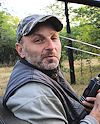 Krisztián Gyöngyi, a Hungarian ecologist, was killed by a black rhino in Agagera National Park in Rwanda in June 2017, just a month after he helped to reintroduce the critically-endangered animal to the country. At the time, Krisztián was training local rangers how to track and protect the recently released black rhinos inh Rwanda. Black rhinos disappeared from Rwanda in 2007 due to poaching but were reintroduced into the country in May 2017 after 20 animals were sent from South Africa to Akagera National Park.
Krisztián Gyöngyi, a Hungarian ecologist, was killed by a black rhino in Agagera National Park in Rwanda in June 2017, just a month after he helped to reintroduce the critically-endangered animal to the country. At the time, Krisztián was training local rangers how to track and protect the recently released black rhinos inh Rwanda. Black rhinos disappeared from Rwanda in 2007 due to poaching but were reintroduced into the country in May 2017 after 20 animals were sent from South Africa to Akagera National Park. Gyongyi, a married father of one, had previously been working on a PhD on the conservation of the animals in Liwonde National Park in Malawi since 2012.
"This is a tremendous loss for all of us, especially for rhino conservation efforts in Africa" said Peter Fearnhead CEO African Parks, paying tribute to Gyongyi.
IN MEMORY OF KRISZTIAN
CAWS launches scholarship programme in memory of rhino conservationist Krisztián Gyöngyi - June 2019
In memory of the late rhino conservationist Krisztián Gyöngyi, Central African Wilderness Safaris (CAWS) recently launched a scholarship programme that will enable youth from the Children in the Wilderness programme in Malawi, to attend a world-class institute and become leaders in the sphere of wildlife management and conservation. This year, Emmanuel Moyo who joined CITW in 2009 and currently serves as the Chairperson of the CITW Youth Programme in Chintheche, has been selected as the recipient of the scholarship, and is set to attend a one-year long course at the Southern African Wildlife College (SAWC) where he will study ‘Nature Resource Management’. On his return to Malawi, Emmanuel will be able to directly contribute to national conservation efforts, and in doing so, keep Krisz’ legacy alive.
Krisz joined the rhino monitoring team in Liwonde National Park in 2012, a time where rampant poaching not only posed a severe threat to the rhinos, but to all other wildlife inhabiting in the park. His dedicated research, passion and knowledge on rhino ecology were instrumental in the implementation of key management measures in Majete Wildlife Reserve, Liwonde National Park and Akagera National Park in Rwanda. Though many passionate conservationists throughout Africa work tirelessly in the battle to save threatened species, Krisz was an exceptional example and a role model and was tragically killed whilst in the field in 2017. This scholarship has been set up to honour his work, and his contribution to protecting Malawi’s black rhinos and wildlife.
-

Tristan Voorspuy was killed by pastoral herders on Sunday in Laikipia while inspecting some of his lodges, a local police official told Associated Press.
It follows a pattern of traditional herdsmen invading ranches in the area to seize pasture amid an ongoing drought. Mr Voorspuy was the founder of luxury safari company Offbeat Safaris (and later acquired Sosian Ranch in Laikapia - see below). Martin Evans, chairman of the Laikipia Farmers Association, said Mr Voorspuy was attacked while inspecting a lodge that had been set alight by so-called "land invaders". When he did not return by Sunday afternoon, an aerial search spotted Mr Voorspuy's injured horse but did not catch sight of the rancher, Mr Evans said. His body was left at the scene for more than 24 hours owing to the volatile security situation, but it has since been retrieved. The Kenyan government has ordered the arrest of political leaders suspected of inciting people to commit murder, poaching, cattle rustling and destruction of property. Interior Minister Joseph Nkaissery announced earlier that 379 herders had been arrested as part of police operations. He said that some local politicians have taken advantage of the movement of cattle herders due to drought conditions in the country's north to incite locals to occupy private property illegally. Mr Voorspuy was born in South Africa but went to secondary school in the UK, attending Eastbourne College in Sussex. He was in the British army for six years, leaving in 1981. After leaving the army, he drove a motorbike from London to Cape Town for nine months, looking for work in Africa. He created Offbeat Safaris in 1990. Mombasa-based business Scenic Air Safaris posted a tribute on its Facebook page, saying: "Our thoughts and prayers go to his wife Cindy and family and to his friends and partners at Sosian Lodge and Offbeat Safaris. "A true officer and a gentleman."Source: BBC News
Sosian Lodge (and ranch) has some very interesting history. Major Gerald Edwards settled on Sosian Ranch in 1920, when he was granted the land after the First World War. In those days Laikipia was several days drive from Nairobi and communications were virtually non-existent.
Cattle ranching in northern Kenya was a seriously adventurous past time and Major Edwards ran the ranch impeccably until he died in 1977. Sadly, after he died the ranch dwindled into ruin. Left unattended to, the over-grazing, combined with a severe drought in 1990 left Sosian entirely barren with no livestock or wildlife able to survive there. For most it was a lost cause…. In 1999 a diverse group of friends, headed up by the late Tristan Voorspuy, came together and bought Sosian with the aim of restoring its ecology and wildlife. It is now a thriving ranch full of incredible game.After Tristan died the Tristan Voorspuy Conservation Trust was set up to cherish his memory (by his family) in order to continue his philanthropic legacy towards protecting Kenya’s wildlife, both flora and fauna, for the future.
Source: Offbeat Safaris Newsletter May 2020
-
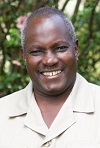
Peter Njoroge (1991 to 2016)- friend and colleague: Governors Camps, Kenya.
It is with deep sadness and a very heavy heart that I write to tell you that Peter Njoroge, long-time friend and colleague to us all at Governors' passed away last week.It signifies the End of an Era - Peter was simply the Perfect Gentleman, the major domo of Kenyan Hospitality and a friend to everyone he ever met.
Peter first joined the fold some 25 years ago in 1991 when my father Aris asked him to join my aunt Elly in running Laitolia House near Gilgil. In the same week he joined the team at Laitolia so did Chef Ndegwa with whom he would form a professional friendship and partnership that lasted 25 years - Peter providing the charm and character and warmth front of house whilst Ndegwa produced mouth-watering dishes back of house. From Laitolia Peter, Elly and Ndegwa came to Loldia House in 1993 where Peter was to remain manager until his retirement in 2012. After that he continued to work part time at Mfangano Island Camp for 6 months a year until his death this month. Peter was one of those rare people who had a true love of his fellow man. Never once did he fail to meet you as you entered one of the properties he managed, always cutting a familiar figure in a khaki Kaunda Suit - a huge smile on his face, a labrador at his feet and a huge pumping handshake accompanied by the familiar "Thank you thank you thank you; asante sana for coming to visit us. Are you well, are you well, thank you. Very Good!". He was the ultimate gentleman. He never sat down at dinner without wearing a jacket and tie but he was never too proud to help a struggling waiter serve at the table. He had a wonderful sense of humour and a personality that shone through like a beacon. He loved nothing better than a gentle joke (never at another's expense) and a laugh and once he hit upon something that made him laugh never tired of laughing at it again and again. He was also a great judge of character and situation. He knew instinctively when to join a client for a meal or conversation and, more importantly, when not to. He was discretion personified. As maitre d' at Nairobi's Top Restaurant Allan Bobbe's Bistro on Koinange Street for most of the 60's, 70's and 80's he saw the great and the good of pre and post colonial Kenya through his doors. He served them and he knew who they brought in and why. But you could never extract an ounce of indiscrete information for him although with a glint in his eye he knew exactly what you were after. When a visiting Princess at Loldia eloped with her body-guard Peter would mention nothing other than the delicious chicken recipe he had got from her and a diplomatic incident was averted. This love of people was reflected back at Peter by a genuine affection for him from so many with whom he came into contact. Repeat guests at Lodia went to see him as much as anything else. Others invited him to their homes in Europe as an honoured guest and flew him there Business Class to ensure they gave him the same care and attention he had lavished on them. When he attended World Travel Market in London in the early 1990's it was like having an A List Celebrity on the stand. Everyone knew him and wanted to greet him. On Gloucester Road a startled client from Loldia held up the traffic to say hello and embrace him on the pavement, and when asked what he thought of London he replied in a flash and with a smile and that familiar glint in his eye "It is a lovely place. We Kenyan's kicked you mzungus out far too early! We should have waited until you had built a city like this for us! Hahaha!!". On that same trip to London Peter was a guest at St James' Palace where he rubbed shoulders with royalty. At Loldia Peter was a fixture for almost 2 decades and together with Elly, Ndegwa and their team turned it into the very special place it has become. It was whilst at Loldia that Peter was described in Country life magazine as 'probably the world's most accomplished Butler'. The 2000's saw many repeat clients visiting Loldia House and Peter never forgot a face and had the most incredible memory for remembering what your likes and dislikes were. It was not unusual for returning guests to be welcomed back with a beaming Peter smiling and saying 'We have your favorite dinner ready for you this evening." And he did. His fair approach to his staff meant almost without exception they all stayed with him for the entire time he was there. "Honest as the day is long, fair, sincere and full of respect for his staff" are familiar qualities remembered by his long-term friends there. He is remembered fondly and missed deeply by them all, not least by Chef Ndegwa. His other great passion was the Primary School at Loldia. Peter sat on the Board and was a tireless fundraiser and supporter of the school. His enthusiasm was the catalyst for the establishment with a group of friends to establish the Loldia School Fund which was to support many many hundreds of children get a better education. He was so successful that this dusty primary school on the North Lake Road in Naivasha was transformed to one of the top achieving schools in Kenya's Rift Valley Province and even boasted a number of Masters students from the University of Pretoria. Peter embodied all that is best about Kenyan Hospitality. We remember him with real affection and all who were privileged to know him feel have lost a true friend and a genuinely good man. Kwaheri Mutongoria. Rest in peace. You will not be forgotten. (Courtesy: Dominic Grammaticas, MD at Governors Camps).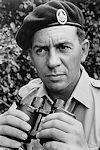
Dr Ian Player (born March 15 1927, died November 30 2014).
Ian Player died in November 2014, aged 87. The older brother of professional golfer Gary Player became involved in conservation in the 1950s as a game ranger on the Hluhluwe uMfolozi Game Reserve in KwaZulu-Natal, Africa’s oldest official nature reserve. When it was established in 1897, there were only about 50 southern white rhinos left in the world, all of them on this reserve. By the time Player began working there in 1952, the population had recovered somewhat to under 500; by 1960 Umfolozi’s population of white rhinos had grown to 600. Player realized that it was dangerous to keep them restricted to one small park, so he convinced his reluctant superiors into allowing to move some of the animals to other protected parts of their former habitat. The resulting Operation Rhino became one of the most successful wildlife translocation programs ever. The southern white rhino became the first animal to be removed from the IUCN endangered species list and has been reestablished from Zululand over much of its former range in South Africa with a population estimated at over 20,000 today. Player eventually retired from the Natal Parks Board in 1974 as chief conservator in Zululand to devote more time to the wilderness movement.Ian Player learned his belief in the spiritual value of wild places and the principles of inhlonipho (respect) and ubuntu (compassion) from his fellow ranger Magqubu Ntombela, a charismatic Zulu of royal blood with whom he started working in 1958. “I was steeped in the racial prejudice of my country and Magqubu transformed me,” Player recalled. In 1963 Player and Ntombela founded a Wilderness Leadership School with the aim of taking young people with leadership potential into the wilderness to encourage them to “question their place in the great scheme of things”. The success of the project eventually led Player to establish an International Wilderness Leadership Foundation in 1974, followed three years later by the World Wilderness Congress, the world’s longest-running public environmental forum.
With his practical approach to conservation, Player influenced numerous crucial developments in the conservation field and was honored with honorary doctorates and awards from around the world. More recently, he came out of retirement to campaign for a relaxation of the ban on the trade in rhino horn following the present surge in rhino poaching. Player believed that government-controlled trading in horns from animals that died naturally could force prices down, undermine the illegal trade and provide a source of revenue for conservation. South Africa’s natural heritage is richer for his contribution and we thank his family for sharing him with us.
Courtesey Gerhard R Damm, africanindaba.com
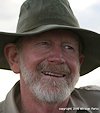
Dr Anthony Hall-Martin - world authority on African elephants and black rhinocerous.
It is with profound sadness that African Parks’ relays the news that Dr Anthony Hall-Martin, our co-founder and conservation director, passed away yesterday (Wednesday 21 May 2014) after a prolonged struggle with cancer. He was 68 years old and is survived by his wife Catherina and daughters Vega and Cate.Anthony had a distinguished conservation career of nearly 50 years and his loss will resonate throughout the continent. During his lifetime he tirelessly championed the cause of wildlife conservation, raised millions of dollars for its benefit, and was responsible for the establishment, expansion or management of dozens of protected areas. He was particularly renowned as a world authority on the African elephant and black rhinoceros and was the author of more than ten books and 80 published scientific papers. During his lengthy tenure at South African National Parks, he was directly responsible for the establishment of six new national parks including Table Mountain National Park, Agulhas National Park, Namaqua National Park and Mapungubwe National Park. He was also responsible for the significant expansion of several national parks adding an additional 400,000 hectares to amongst others, Addo National Park, Augrabies National Park, Mountain Zebra National Park, Karoo National Park and Marakele National Park. Anthony also had the foresight to de-proclaim the compromised Vaalbos National Park which was then replaced with the bio-diversity rich Mokoala National Park. He was a pioneer in the establishment of transfrontier conservation areas and was responsible for the conclusion of the agreement between Botswana and South Africa that gave rise to the Kgalagadi Transfrontier Park. During his career he was responsible for the introduction of elephant and rhino to national parks and wildlife reserves across Africa, contributing greatly to the conservation of these species. Today, Malawi, Zambia and Tanzania have populations of black rhino as a direct result of his interventions.
As co-founder of African Parks in 2000, Anthony had the foresight to realise that a pragmatic new model was required to address the looming conservation crisis in many parts of Africa. As the Conservation and Development Director at African Parks, he championed the organisation’s entry into Malawi, Rwanda, Ethiopia and Zambia, and negotiated with dozens of African Governments to advance the conservation of protected areas across the continent. One of his notable success stories was the transformation of Majete Wildlife Reserve in Malawi from a totally depleted park to a thriving conservation success involving an initial restocking of over 2,500 animals including elephant, black rhinoceros, buffalo, sable antelope, zebra, lion and leopard. At the time of his death, Anthony was a board member of Majete Wildlife Reserve in Malawi, Liuwa Plain National Park in Zambia and Akagera National Park in Rwanda. He continued to work tirelessly to secure more protected areas across Africa until literally days before his death.
Anthony was a founder of the IUCN African Rhino Specialist Group and co-founder of the Rhino and Elephant Foundation. He was a trusted advisor to many conservation organisations, including the IUCN, WWF, Endangered Wildlife Trust and Peace Parks Foundation, and received a number of awards for his contribution to conservation, including the British Council for Zoology Award, the Bruno H Schubert Prize in Germany, the Senior Captain Scott Medal from the South African Academy of Science, and the National Geographic Society Award.
As tributes pour in from the conservation world, those who knew Anthony have described him as a conservation giant whose impact was felt throughout the African continent. At African Parks,Anthony was a mentor, friend and inspiration to his many colleagues who valued and benefitted from his wisdom, wit and guidance. He has left a significant conservation legacy for the world and he will be sorely missed by all who knew, respected and loved him.
Courtesey Peter Fearnhead, Chief Executive Officer African Parks Network
 Anthony King (18 March 1968 - 24 February 2013), who has died in an air crash aged 44, was a leading campaigner for wildlife conservation in Kenya. For more than 20 years King and his wife Delphine contributed to the work of numerous conservation organisations and programmes in East Africa, including the African Wildlife Foundation, the UN Environment Programme, the African Conservation Centre, the Mpala Wildlife Foundation and the Kenya Land Conservation Trust. But King became most closely associated with the Laikipia Wildlife Forum (LWF), of which he was executive director from 2005 to 2011. Anthony King was born in Nairobi on March 18 1968. His father, Professor John King, was veterinary officer and head of the capture unit of the Kenya Game Department, and led early conservation work on rhinos and elephants in the 1960s. The first few years of Anthony’s life were spent in the Nairobi National Park. He also played a role in the development of a national association for community and private land conservation areas — the Kenya Wildlife Conservancies Association — and in the drafting of the Kenyan government’s recent Wildlife Act.
Anthony King (18 March 1968 - 24 February 2013), who has died in an air crash aged 44, was a leading campaigner for wildlife conservation in Kenya. For more than 20 years King and his wife Delphine contributed to the work of numerous conservation organisations and programmes in East Africa, including the African Wildlife Foundation, the UN Environment Programme, the African Conservation Centre, the Mpala Wildlife Foundation and the Kenya Land Conservation Trust. But King became most closely associated with the Laikipia Wildlife Forum (LWF), of which he was executive director from 2005 to 2011. Anthony King was born in Nairobi on March 18 1968. His father, Professor John King, was veterinary officer and head of the capture unit of the Kenya Game Department, and led early conservation work on rhinos and elephants in the 1960s. The first few years of Anthony’s life were spent in the Nairobi National Park. He also played a role in the development of a national association for community and private land conservation areas — the Kenya Wildlife Conservancies Association — and in the drafting of the Kenyan government’s recent Wildlife Act.King was killed when the light aircraft he was piloting crashed in Mount Kenya Forest during bad weather on the morning of Sunday 24th February 2013. A passenger also died. Anthony King is survived by his wife and their two sons.
 Born in England, Phil Hockey (8 March 1956 – 24 January 2013) came to the FitzPatrick Institute in 1976 to assist with a study of White-fronted Plover breeding biology at Langebaan Lagoon. Preferring conditions here to counting sea ducks in winter from freezing Scottish shores, Phil moved to South Africa in 1979 to study African Black Oystercatchers for his PhD. After graduating in 1983, Phil stayed on at the Fitztitute as a contract researcher, and then as a lecturer. Although most of his early research focused on coastal and estuarine bird ecology, Phil was involved in setting the guidelines for the first southern African bird atlas, and was lead author on the bird atlas of the Southwestern Cape. Phil’s focus on coastal waders and interactions with their food supplies took him to tropical Africa and islands in the Indian Ocean, South America, the Canary Islands and the Middle East. He was soon recognised as the authority on African waders and in 1995 he published the monograph 'Waders of Southern Africa'. Together with Ian Sinclair and Warwick Tarboton he also wrote the best-selling regional field guide 'Sasol Birds of Southern Africa'.
Born in England, Phil Hockey (8 March 1956 – 24 January 2013) came to the FitzPatrick Institute in 1976 to assist with a study of White-fronted Plover breeding biology at Langebaan Lagoon. Preferring conditions here to counting sea ducks in winter from freezing Scottish shores, Phil moved to South Africa in 1979 to study African Black Oystercatchers for his PhD. After graduating in 1983, Phil stayed on at the Fitztitute as a contract researcher, and then as a lecturer. Although most of his early research focused on coastal and estuarine bird ecology, Phil was involved in setting the guidelines for the first southern African bird atlas, and was lead author on the bird atlas of the Southwestern Cape. Phil’s focus on coastal waders and interactions with their food supplies took him to tropical Africa and islands in the Indian Ocean, South America, the Canary Islands and the Middle East. He was soon recognised as the authority on African waders and in 1995 he published the monograph 'Waders of Southern Africa'. Together with Ian Sinclair and Warwick Tarboton he also wrote the best-selling regional field guide 'Sasol Birds of Southern Africa'.As Phil’s career developed, he broadened his fields of interest to include bird movement and migration, avian life history evolution and the ecology of rarity. He also extended his horizons inland, taking charge of the Fitz’s Karoo ecosystems project. By the end of the 1990s, Phil was one of the most experienced ornithologists in southern Africa, and a natural choice to lead the revision of 'Roberts’ Birds of Southern Africa'.
Phil was appointed the Institute's Director in 2008 and has led the DST/NRF Centre of Excellence using ‘Birds as Keys to Biodiversity Conservation’ to new heights. During his career, he graduated 18 PhD and 33 MSc students, and supervised eight Post-doctoral Fellows and some 30 honours projects. In addition to more than 120 scientific papers, Phil published over 150 semi-popular articles and 12 books and book chapters. He was passionate about the need to disseminate the science of birds, and their conservation, to a wide audience, and frequently presented public lectures, radio and television interviews. His contribution in this regard was recognised by the South African Network for Coastal and Oceanic Research who named him ‘Marine and Coastal Communicator of the Year’ in 2000 and he was awarded the Stevenson-Hamilton Medal by the Zoological Society of Southern Africa in 2008 for contributions to the public awareness of science.
Phil’s impact and leadership in ornithology has been exemplary and he will be remembered through his vast contribution to the avian literature, both scientific and popular. Phil touched the hearts and lives of many people, from deeply insightful discussions about birds to warm interactions on life itself. He was a deeply caring person with an open heart and will be sorely missed by many.
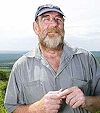 Lawrence Anthony (September 17 1950, died March 2 2012), a legend in South Africa and author of 3 books including the bestseller, The Elephant Whisperer. He bravely rescued wildlife and rehabilitated elephants all over the globe from human atrocities, including the courageous rescue of Baghdad Zoo animals during US invasion in 2003.
Lawrence Anthony (September 17 1950, died March 2 2012), a legend in South Africa and author of 3 books including the bestseller, The Elephant Whisperer. He bravely rescued wildlife and rehabilitated elephants all over the globe from human atrocities, including the courageous rescue of Baghdad Zoo animals during US invasion in 2003. On March 7, 2012 Lawrence Anthony died. He is remembered and missed by his wife, 2 sons, 2 grandsons, and numerous elephants. Two days after his passing, the wild elephants showed up at his home led by two large matriarchs. Separate wild herds arrived in droves to say goodbye to their beloved 'man-friend'. A total of 31 elephants had patiently walked over 12 miles to get to his South African house. Witnessing this spectacle, humans were obviously in awe not only because of the supreme intelligence and precise timing that these elephants sensed about Lawrence's passing, but also because of the profound memory and emotion the beloved animals evoked in such an organized way: Walking slowly, for days, making their way in a solemn one-by-one queue from their habitat to his house.
Lawrence 's wife, Francoise, was especially touched, knowing that the elephants had not been to his house prior to that day for well over 3 years! But yet they knew where they were going. The elephants obviously wanted to pay their deep respects, honouring their friend who'd saved their lives - so much respect that they stayed for 2 days 2 nights without eating anything. Then one morning, they left, making their long journey back home.
Lawrence Anthony made world headlines in 2003 when he arrived in war-torn Baghdad to rescue the animals in Saddam Hussein’s zoo. He told the story of the elephants in The Elephant Whisperer (co-written with Graham Spence). Baghdad was not Anthony’s only experience of working in war zones. In 2006 he convinced the leaders of The Lord’s Resistance Army (LRA), which has been involved in a bloody struggle with the Ugandan government for more than two decades, to sign up to a conservation project to save the northern white rhino, one of the world’s rarest animals.
 It is with great sadness that Atta reports the death of Aris Grammaticas at his home in Karen, Nairobi.
It is with great sadness that Atta reports the death of Aris Grammaticas at his home in Karen, Nairobi. Aris was a legend in the safari business, a pioneer of the Kenyan tourist industry, founding Governors Camp on the banks of the Mara River almost forty years ago,one of the very first luxury safari camps in Kenya. This was soon followed by Little Governors close by, and then the extended Governors Group of Governors' Il Moran Camp, Governors’ Balloon Safaris, Loldia House on Lake Naivasha, Mfangano Island Camp on Lake Victoria and Sabyinyo Silverback Lodge in North West Rwanda.
Aris was a founder member of Classic Safari Camps of Africa and a vibrant, often vociferous member of Atta from the very beginning. He was the backbone of the tourism exhibition circuit, especially in London, Berlin and Durban,tirelessly fighting the cause of the day for his beloved Africa and the Masai Mara from the Governors stand, and then at the end of an exhausting day, always out-pacing the younger members to the small hours! No one was better when on the back foot, and his quick rhetoric style always managed to turn a problem into a positive. This is so aptly shown in the clip below (no longer available), taken in the Atta marquee at Indaba, South Africa in 2008 in which Aris skilfully manages to manoeuvre a potentially difficult interview following turbulent times, into a PR triumph for Kenya and the Governors brand. So very Aris! So many of us in the African tourism industry owe so much to Aris and our thoughts and prayers go to Romi and his four children Dominic, Damien, Justin and Ariana and his grandchildren. Safari Njema, Aris. (Don’t argue with the angels about park entry fees!)Rice Time, gone now from our midst, was a hunter’s hunter: honest, good humoured, courageous, imbued with a keen intelligence and unshakable tenacity and fortitude; a man of integrity. He hunted, not for ivory or trophies – legal or illegal, but rather to protect farmers and villagers from wildlife depredations, following on in our Game Department the tradition set by the Provincial Administration of 1935 with the establishment of a Game Control Department (later known as the Game Department) - responsible for protecting people rather than wild animals, expanding in 1942 into the Department of Wildlife and Tsetse Control, and later when Rice and I worked together in 1966/67, the Department of Game and Fisheries, and later still in 1988/89, the Department of Wildlife and National Parks.
Rice, a Tonga from the south bank of the Zambezi, had his start with Operation Noah during the flooding of the Zambezi at Kariba, a programme which rescued island-stranded wildlife on his ancestral lands and then released them on the mainland. Later, he moved to the Mazabuka farming block where he earned his spurs hunting down lion and leopard cattle killers, bushpig and baboons under the Vermin Control Officers, Johnny Uys and T.G. Murphy, earning the admiration of the Provincial Game Officer, Frank Ansell, and the gratitude of many farmers and villagers. Like most of the great fundis and game guards, he was without formal education. In 1966, he was recruited by the Warden of Luangwa Command, Johnny Uys, to the Luangwa Game Cropping Unit at Kakumbi and assigned to me as my fundi. He spoke no English, and I no Chinyanja, so we prattled on in Chilapalapa – spoken then from Cape Town to Tanganyika. And like my great friend, Derek Macleod’s fundi, Nelson Chilangwa – well known for his assistance to Norman Carr in the rearing of a few lion and a trip to London to publicize Norman’s book ‘Return to the Wild, he proved to be a goldmine of bush lore and utterly fearless and dependable. Only the best fundis sufficed, for the work was arduous and highly dangerous as it involved killing complete elephant herds by day with dart guns, and to begin with, hippo on foot at night. In the first rainy season, we all went briefly our separate ways, deployed by the Warden, Johnny Uys, on game control work of one sort or another, although it was the Senior Ranger, Les Allen, who sent Rice off to deal with garden raiders with 29 rounds of ammunition. He returned at the end of the rains with 29 elephant tails. As the cropping work involved a great deal of running – not always forward, through the bush after elephant with ten 20 cc syringes clutched in the hand, and the Game Department being loth to revert to the use of firearms, fearing the disturbance factor, I suggested to the then Chief Game Officer, Bill Bainbridge, that when MacLeod and I left, that Rice and Nelson should take over the cropping. This was agreed to. I then trained them in the use of the dart guns, in the handling of the drug – a rather unforgiving neuro-muscular blocking agent for which no antidote existed, but for some reason replacements were brought in, one being the highly experienced Rob Backus, but other candidates were uninspiring. Rice and Nelson merely carried on as before. When I saw Rice a year later, he recounted some of his experiences, laughing and shaking his head at the scrapes he had been lead into. The cropping scheme closed in 1972, the thousand or so elephant shot a paltry dent in the 100, 000 whom it was feared would severely alter the floristic diversity of the Luangwa. The following year began the killing fields, in the case of the elephant, a repeat of the depredations a hundred years before by the hunters in the employ of the Tete based ivory traders. In 1970, Rice assisted Johnny Uys – then Chief Game Warden, in conducting the Crown Prince Birendra of Nepal and his wife, Princess Aiswarya, on a hunt at Luwawata in the Luangwa, the Prince’s father, King Mahendra, hunting with Peter Hankin. This Eton and Harvard educated Prince was without luck for the safari was a disaster of massive proportions, and seven years after his coronation in 1974, his son killed both him and his wife and a number of family members. In 1988/89, Rice - now retired, and I were re-united in the doomed task of saving the last few black rhino left in Zambia: the plan being to fence off a large patch of land on the Mushilashi river in the South Luangwa National Park, and there to translocate the last pockets of rhino left in the country since the onset of the killing fields in 1973. Rice soon set to work and after a few weeks in the bush alone, found fourteen rhino in and around the Chendeni Hills, not far from the headquarters of the Luangwa Integrated Rural Development Project. Other surviving rhino were noted for future rescue work. But those in power refused to allow the Chendeni rhino either to be moved or to be placed in a sanctuary; they were safe we were told. Inevitably, within a few years they were all dead. I found other work for Rice: training guards in the Kasanka National Park and ending his career with Kapani lodge, becoming a great favourite on walking trails with the great, the good and the balmy. Rice, in a long and adventurous life, had two wives, 16 children, 30 grandchildren and 10 great-grand children, a remarkable achievement in itself. I hope they will carry the memory of his integrity with them.Posted by I.P.A. MANNING on http://zambiaconservation.blogspot.com/2007/04/
"Who will now care for the animals, for they cannot look after themselves? Are there young men and women who are willing to take on this charge? Who will raise their voices, when mine is carried away on the wind, to plead their case?" - George Adamson (1906-1989)